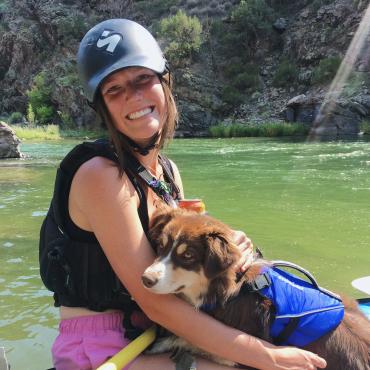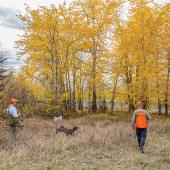For the Long Haul
Winterizing & cleaning warm-weather gear.
“An ounce of prevention is worth a pound of cure.” —Benjamin Franklin
Fall in Bozeman is fleeting—golden leaves one week, snow-covered trails the next. And, while it’s tempting to hang up your gear and head straight into the next season, shoulder season is a crucial time to prep your equipment for hibernation. Take care of it now, and it’ll return the favor come spring.
Here’s how to winterize your raft, bike, and trail gear properly, along with what you’ll need to do it.
Essential Winterizing Kit
Mild soap (Nikwax, Dr. Bronner’s)
Soft brushes or sponges
Chain degreaser & bike lube
Gear-safe detergent (Grangers, Nikwax)
303 Aerospace protectant (trust us)
Patching kit for rafts
Baking soda (for bladders and odor)
Rags & microfiber towels
Clear storage bins or mesh bags
Labels & permanent markers
Bikes
Do
Clean the frame, drivetrain, and wheels thoroughly.
Lubricate your chain.
Slightly deflate the tires.
Store indoors—out of the cold and off the ground if possible.
If necessary, get your bike tuned in the fall.
Note: If stored properly, it’ll be ready to go come spring and you can skip the wait times at the bike shop.
Don’t
Leave mud & grime on—it corrodes over winter.
Clean with a power washer—too much pressure can force water past bearing seals.
Use non-bike chain oil or over-lubricate your chain.
Note: Put this baby on the bike rack and head to the do-it-yourself carwash—just be careful to avoid sensitive areas with the pressure hose.
Rafts & Inflatable Watercrafts
Do
Clean with mild soap and a soft brush, especially around valves and seams.
Dry completely—inflate and let it air out in the sun before storing.
Apply a thin layer of 303 over the entire surface.
Patch any holes or leaks.
Store in a cool, dry spot—partially inflated or loosely rolled.
Don’t
Roll it up while wet or sandy.
Store in a spot exposed to sun, rodents, or outside in winter temperatures.
Skip the boat check on the way home from a late-summer float.
Note: Hypalon boats are more tolerant of temperature fluctuations and UV exposure, making them a bit more forgiving in cold garages or uninsulated sheds. PVC boats are more sensitive—especially to cold and creasing—so store them in a climate-stable space and avoid tightly folding them.
Trail Gear
Do
Wash packs, shoes, layers, and socks—check manufacturer labels.
Scrub and dry hydration bladders, valves, and hoses using baking soda or a reservoir cleaner.
Remove batteries from electronics to avoid corrosion.
Organize gear by activity—in breathable bins or mesh bags.
Don’t
Store damp shoes or clothes in a sealed tote.
Leave perishables (like snacks or gels) in your pack.
Wait until spring to find that one lost trekking pole.
Note: Write yourself a spring note. If there’s something you didn’t get around to, just tape a note to your raft bag or gear bin. E.g., “Needs patch on left tube” or “Need new headlamp batteries.”
Sure, pending a couple days hunting, climbing, or biking is more fun than cleaning and organizing your gear all weekend, but it’s sure to save you both time and money when the next season rolls around. You’ll be thanking your past-self come April as you gear-up to bike Hyalite while your friends are reading up on mold-removal techniques.















